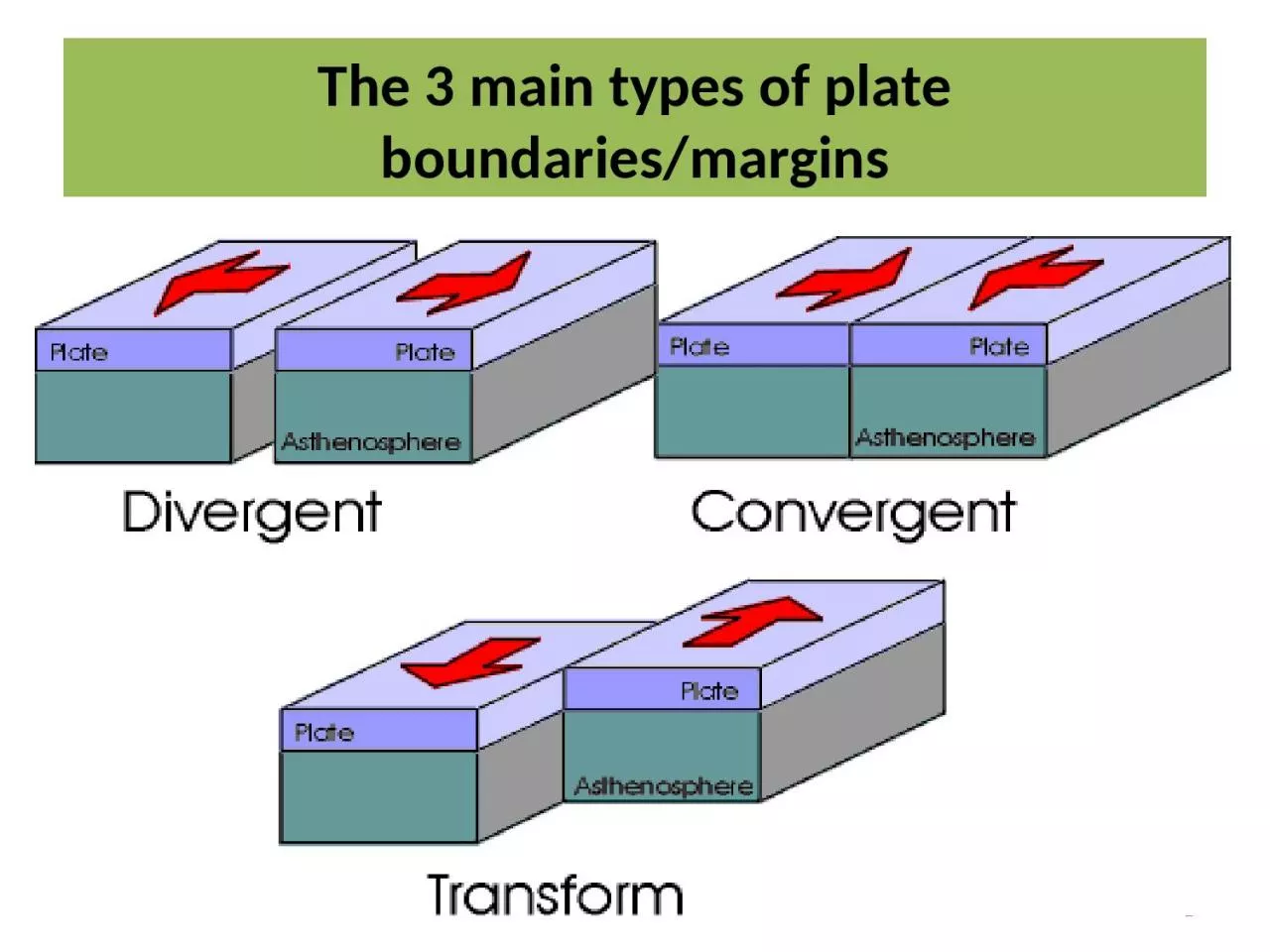

1 2 Oceanic crust 1Convection currents pull plates apart 3As the plates move apart magma from the mantle rises to fill the gaps and forms new oceanic crust 4A midocean ridge is formed by the new crust ID: 1021896
Download Presentation The PPT/PDF document "The 3 main types of plate boundaries/mar..." is the property of its rightful owner. Permission is granted to download and print the materials on this web site for personal, non-commercial use only, and to display it on your personal computer provided you do not modify the materials and that you retain all copyright notices contained in the materials. By downloading content from our website, you accept the terms of this agreement.
1. The 3 main types of plate boundaries/margins1
2. 2Oceanic crust1-Convection currents pull plates apart. 3-As the plates move apart, magma from the mantle rises to fill the gaps and forms new oceanic crust.4-A mid-ocean ridge is formed by the new crust. 5-Submarine volcanoes appear along the ridge. Some may grow to form islands, e.g. Iceland. 6-Earthquakes are caused by volcanic eruptions or by tensional forces. Oceanic crust2-This leads to gaps being formed in the crustal rocks.Divergent or constructive margins
3. 3
4. Destructive/convergent margins: Ocean-to-continent marginNazca Plate(Oceanic)South AmericanPlate (Continental)Mantle PacificOceanVolcanoTrench Andes fold mountainsSubductionzone2-The Nazca Plate (oceanic) is being subducted below the South American Plate (continental).3-Friction and pressure cause earthquakes to occur along the subduction zone4-The heat fromthe mantle causes the oceanic plate to be destroyed.5-The melting platecreates lighter magma that risestowards the surfaceto form volcanoes.6-The Peru-Chile trenchforms where the oceanic plate is beingsubducted.7-The collision causesfolding and uplift ofrocks which form foldmountains. Earthquakes1-The Nazca Plate and the South American Plate move towards each other due to convection currents.4
5. 5
6. Destructive/convergent marginb- Continental-to-continental margin61- When two continental plates meet at a destructive boundary, a slow collision takes place as both plates have a low density.2- This results in intense folding and uplift and leads to the formation of fold mountains. 3- There is no subduction. Therefore, there are no volcanoes.4- However, earthquakes occur due to the collision of the plates.
7. 7
8. Conservative [transform] margins8The San Andreas Fault in California marks the junction of the North American and Pacific plates. Both plates are moving north-west but at different speeds. Instead of slipping smoothly past each other, they tend to ‘stick’. The pressure builds up until suddenly the plates move forward and an earthquake occurs. There is no volcanic action because the crust is not being destroyed. Plates just slide past each other with crust neither created nor destroyed. Friction builds up and energy is released when the plates ‘jerk’, causing earthquakes.
9. 9